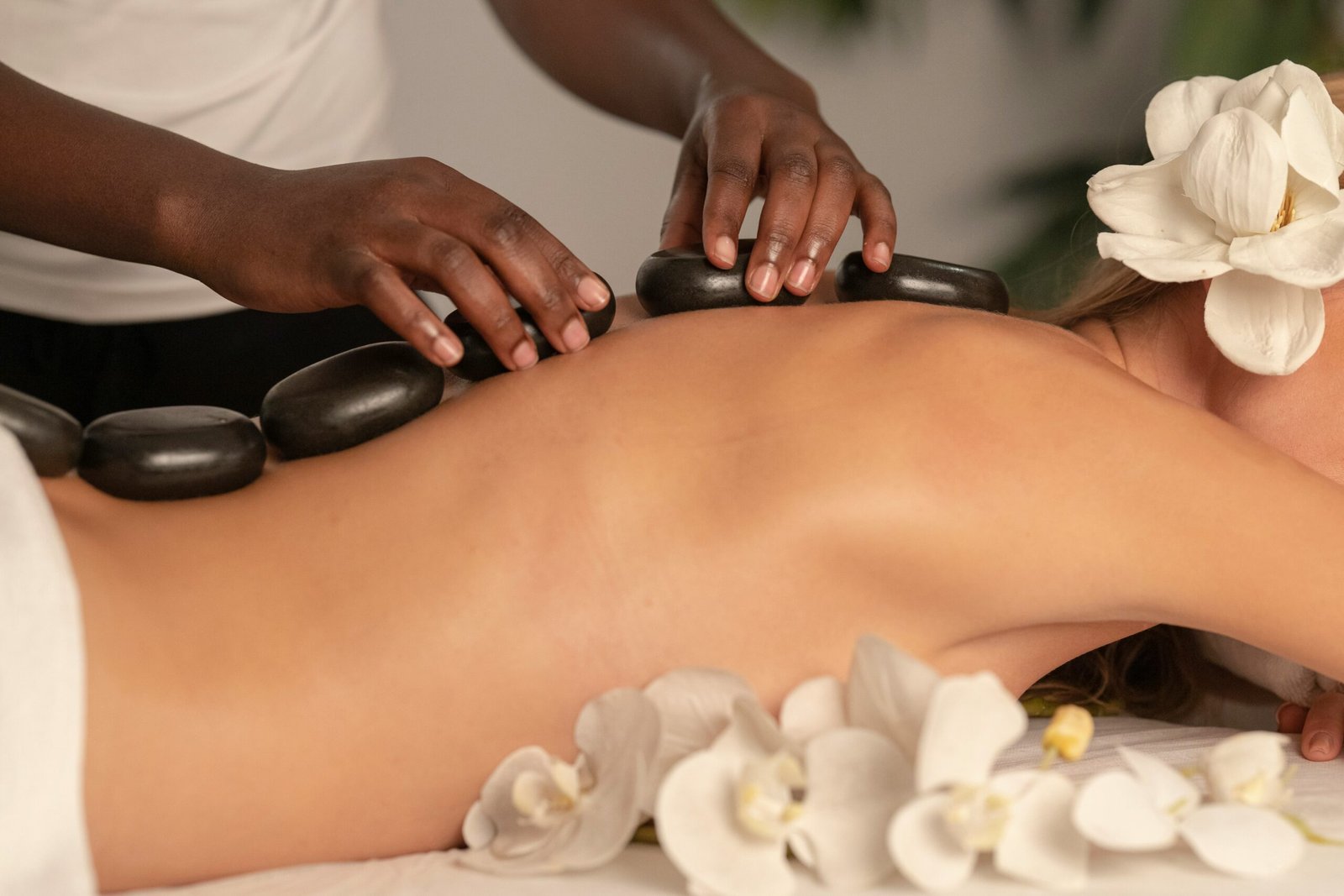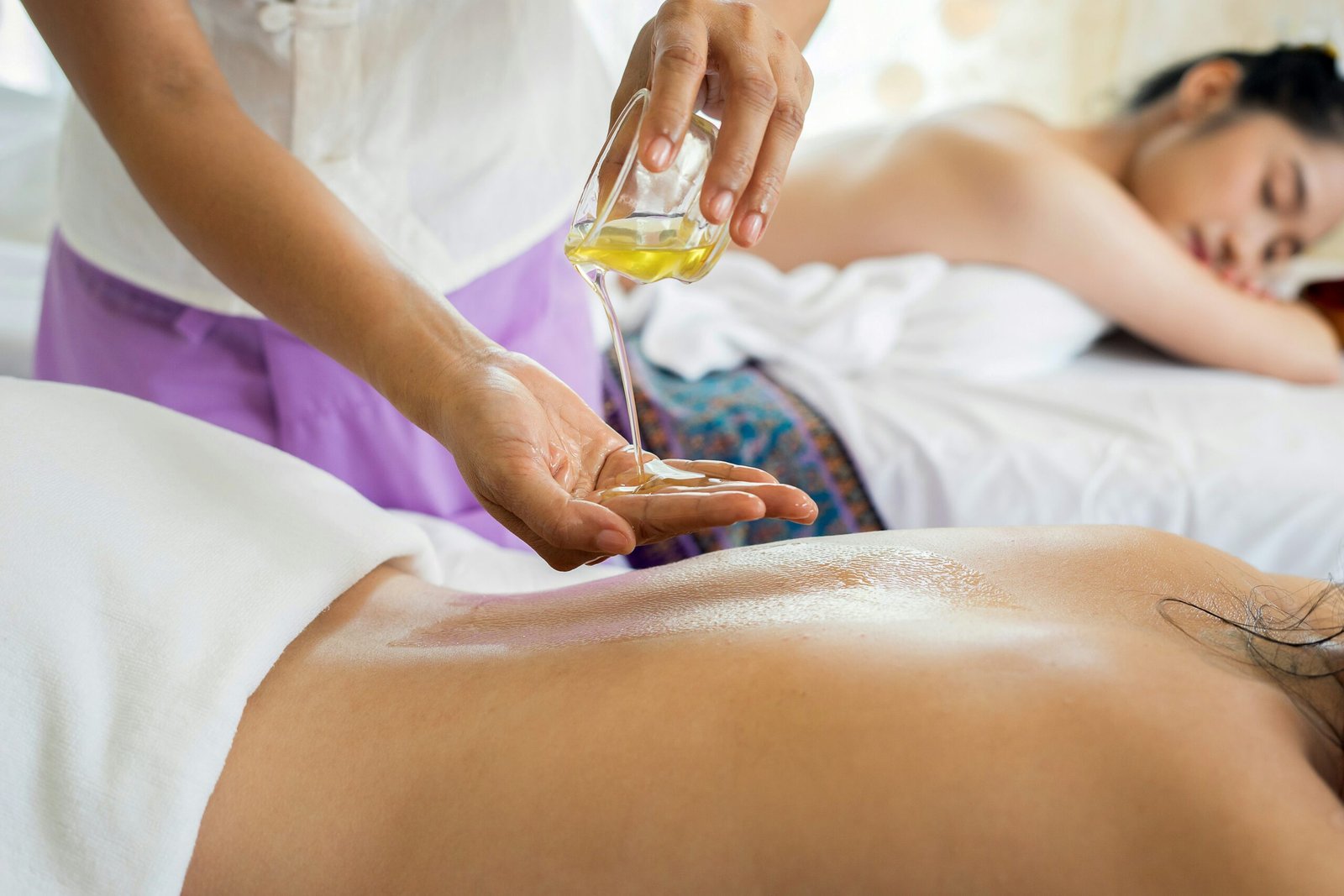Introduction to Hot Stone Massage Therapy
Hot stone massage therapy is a therapeutic technique that has deep historical roots, tracing back to ancient civilizations. This form of therapy involves the use of smooth, heated stones, typically basalt, which are renowned for their heat retention properties. The origins of hot stone massage can be found in cultures as diverse as the Native Americans, who used heated stones in their sweat lodge ceremonies, and the ancient Chinese, who applied similar methods for medicinal purposes over 2,000 years ago.
In the context of hot stone massage, the stones are warmed in water to a precise temperature range, ensuring they provide a comfortable and soothing sensation when placed on the body. The heat from the stones penetrates deep into the muscles, promoting relaxation and easing muscle stiffness. This process not only enhances the effectiveness of the massage but also enables the therapist to work on deeper muscle layers without causing discomfort.
Over the years, hot stone massage therapy has evolved, integrating modern techniques and scientific understanding to maximize its benefits. Today, it is a popular choice in spas and wellness centers worldwide, revered for its ability to provide profound relaxation, reduce stress, and improve overall well-being. The therapy is particularly beneficial for individuals dealing with chronic pain, anxiety, or circulatory issues, as the heat aids in improving blood flow and alleviating tension.
The growing popularity of hot stone massage therapy in contemporary spa treatments can be attributed to its holistic approach. It not only targets physical ailments but also addresses mental and emotional health, creating a balanced state of harmony within the body. As a result, many people turn to this ancient yet ever-evolving practice to experience its myriad benefits, making hot stone massage a staple in the realm of therapeutic and relaxation treatments.
The Science Behind Hot Stone Therapy
Hot stone therapy is grounded in both ancient practice and modern science, providing a unique approach to relaxation and healing. The fundamental principle behind hot stone therapy lies in the application of heat, typically through smooth, heated stones, to various parts of the body. The heat from the stones penetrates the skin and underlying muscles, promoting multiple physiological benefits.
One of the primary effects of hot stone therapy is the enhancement of blood circulation. The heat causes vasodilation, which is the widening of blood vessels. This process increases blood flow to targeted areas, enhancing oxygen and nutrient delivery while facilitating the removal of metabolic waste. Improved circulation can contribute to overall cardiovascular health and aid in the recovery of muscle tissue.
Furthermore, the thermal effects of hot stone therapy can significantly reduce muscle tension and pain. The heat helps to increase tissue elasticity, making muscles more pliable and easier to manipulate. This can be particularly beneficial for individuals with chronic pain conditions or muscle stiffness. By alleviating tension, hot stone therapy can also contribute to improved joint flexibility and range of motion.
Scientific studies have corroborated the effectiveness of hot stone therapy in promoting relaxation and reducing stress levels. One study published in the Journal of Alternative and Complementary Medicine demonstrated that participants who received hot stone therapy experienced a significant decrease in stress and anxiety levels compared to those who did not. Additionally, expert opinions from licensed massage therapists and healthcare professionals emphasize the holistic benefits of integrating hot stone therapy into regular wellness routines.
Incorporating the practice of hot stone therapy into one’s lifestyle can provide a multitude of health benefits. By understanding the scientific principles behind this ancient practice, individuals can make informed decisions about their wellness strategies, utilizing the natural power of heat to enhance their physical and mental well-being.
Preparing for a Hot Stone Massage
Preparing for a hot stone massage is a crucial step to ensure both the client and therapist have a successful and therapeutic session. A comfortable, clean, and well-organized workspace sets the foundation for the entire experience. The massage table should be covered with fresh linens and a heated blanket to maintain a warm environment. Additionally, the room should be tranquil, with soft lighting and calming music, to help the client relax and feel at ease.
Hot stone therapy requires specific types of stones, typically basalt due to their smooth texture and excellent heat retention. These stones vary in size to accommodate different areas of the body; larger stones are used for broad muscle groups like the back and thighs, while smaller stones are ideal for more precise areas such as the hands and feet. Proper heating methods are essential to ensure the stones are at an optimal temperature, generally between 120°F and 130°F. A professional stone heater is recommended to maintain consistent heat and avoid any potential safety hazards.
Client consultation is a vital part of the preparation process. Before the session, the therapist should discuss the client’s medical history, current health conditions, and any specific areas of tension or discomfort. This helps tailor the massage to the client’s needs, ensuring a personalized and effective treatment. Setting clear expectations is equally important; the therapist should explain the steps involved in hot stone massage, the sensations the client might experience, and the benefits they can expect. This transparency helps build trust and allows the client to fully relax and enjoy the session.
In summary, thorough preparation for a hot stone massage involves creating a serene environment, using the appropriate stones and heating methods, and conducting a detailed client consultation. These steps are essential to deliver a safe, comfortable, and beneficial hot stone therapy experience.
Techniques and Procedures
Hot stone massage therapy is a specialized practice that blends traditional massage methods with the strategic use of heated stones. The process begins with the heating of smooth, flat basalt stones, known for their ability to retain heat. These stones are typically warmed in water at temperatures ranging between 120°F to 145°F. The warmth from the stones helps in relaxing the muscles, making it easier for the therapist to perform deep tissue manipulations.
The session typically starts with the placement of hot stones on key points of the body, such as the spine, stomach, chest, face, palms, and toes. These points are often chosen based on the client’s specific needs and the therapist’s assessment. The heat from the stones penetrates deeply into the muscles, promoting increased blood flow and relaxation. This initial placement helps in preparing the muscles for further massage techniques.
Following the placement, the therapist may use the stones as extensions of their hands to perform various massage strokes. Common techniques include long, gliding strokes (effleurage), kneading (petrissage), and circular movements. The stones provide the added benefit of consistent heat, which enhances the effectiveness of these techniques. The therapist may also alternate between using hot stones and their hands to manipulate the muscles, ensuring a balanced and thorough treatment.
Integrating hot stones with traditional massage techniques requires a careful balance to prevent burns or discomfort. Therapists are trained to constantly monitor the temperature of the stones and the client’s comfort level. Stones that cool down are replaced with freshly heated ones to maintain a consistent therapeutic effect. It is also essential to place a barrier, such as a towel, between the stone and the skin to avoid direct contact unless the stone has cooled to a safe temperature.
Safety precautions are paramount in hot stone massage therapy. Therapists must ensure that the stones are not overheated and should always test the temperature before applying them to the client’s body. Communication with the client is crucial throughout the session to adjust stone placement and pressure as needed. Proper hygiene practices, including the cleaning and sanitizing of stones between sessions, are also essential to prevent any risk of infection.
Health Benefits of Hot Stone Massage
Hot stone massage therapy offers a myriad of health benefits that cater to both physical and emotional well-being. One of the primary physical benefits is muscle relaxation. The heat from the stones penetrates deep into the muscles, easing tension and stiffness. This is particularly beneficial for individuals suffering from chronic pain conditions such as arthritis or fibromyalgia. By relaxing muscles, hot stone massage also helps in alleviating pain, making it a go-to treatment for those experiencing back pain, neck pain, or muscle spasms.
Another significant advantage is improved circulation. The heat from the stones causes blood vessels to expand, which enhances blood flow throughout the body. This not only helps in delivering more oxygen and nutrients to vital organs but also aids in the removal of toxins. Improved circulation can lead to better cardiovascular health and increased energy levels. Additionally, the enhanced blood flow can expedite the healing process of injured tissues, making hot stone massage a valuable therapy for athletes and those recovering from injuries.
On the mental and emotional front, hot stone massage is renowned for its stress-reducing properties. The combination of heat and therapeutic massage techniques helps to lower cortisol levels, the body’s primary stress hormone. This leads to a state of deep relaxation, which can significantly improve mood and reduce anxiety. Many clients report feeling a sense of tranquility and mental clarity following a session, making it an excellent therapy for those dealing with high-stress lifestyles or mental health challenges.
Testimonials from clients often highlight the multifaceted benefits of hot stone massage. Jane, a 45-year-old office worker, shares, “After my first session of hot stone massage, I felt an incredible release of tension in my back and shoulders. It was as if a weight had been lifted off me. Not only did I feel physically better, but my mood improved dramatically.” Similarly, a case study involving a professional athlete revealed enhanced muscle recovery and reduced injury-related pain after incorporating hot stone massage into their routine.
Overall, hot stone massage therapy provides a holistic approach to health, addressing both physical ailments and emotional well-being. Whether you’re seeking relief from chronic pain, improved circulation, or a mental escape from the stresses of daily life, this therapeutic practice offers a comprehensive solution.
Potential Risks and Contraindications
While hot stone massage therapy offers numerous benefits, it is crucial to be aware of its potential risks and contraindications to ensure client safety. One primary concern is the presence of certain skin conditions. Individuals with open wounds, rashes, or infections should avoid hot stone therapy as the heat can exacerbate these issues. Moreover, people with conditions such as eczema or psoriasis might experience irritation or flare-ups due to the increased temperature.
Another critical consideration involves circulatory issues. Clients with high blood pressure, varicose veins, or a history of blood clots should consult a healthcare professional before undergoing hot stone massage therapy. The heat from the stones can potentially aggravate these conditions, leading to adverse effects. Additionally, individuals with cardiovascular problems or those who are prone to fainting or dizziness should exercise caution, as the heat may cause fluctuations in blood pressure.
Pregnancy is another important factor to consider. Pregnant women, especially those in the first trimester, should avoid hot stone massage therapy due to the risk of overheating and its potential impact on fetal development. Even in later stages of pregnancy, it is advisable to seek guidance from a healthcare provider and ensure that the massage therapist is experienced in prenatal massage techniques.
To identify and mitigate these risks, it is essential for massage therapists to conduct a thorough consultation with clients before commencing hot stone therapy. This includes reviewing their medical history, current health conditions, and any medications they may be taking. By doing so, therapists can tailor the session to suit individual needs and avoid any adverse reactions.
Overall, while hot stone massage therapy can be highly beneficial, recognizing and addressing its potential risks and contraindications is paramount. Ensuring a comprehensive understanding of a client’s health status and maintaining open communication can help create a safe and effective therapeutic experience.
Choosing the Right Hot Stones and Equipment
Hot stone massage therapy is renowned for its ability to provide deep relaxation and alleviate muscle tension. However, the effectiveness of this therapy significantly depends on selecting the appropriate stones and equipment. The choice of stones is paramount, as they come in various types, each with unique properties. Basalt stones are highly favored due to their excellent heat retention and smooth texture. Their ability to maintain warmth allows for prolonged and effective massage sessions. On the other hand, marble stones, though less common, are used for their cooling properties to complement the hot stones and provide a balanced thermal treatment.
Beyond the types of stones, the quality of the stones is also critical. High-quality stones should be smooth, free of cracks, and properly sized to fit different parts of the body. Investing in well-crafted stones ensures a more comfortable and effective massage experience for clients.
In addition to stones, essential equipment for hot stone massage therapy includes stone heaters, towels, and massage oils. Stone heaters are specifically designed to evenly heat the stones to a safe and therapeutic temperature. It is important to choose a reliable heater with adjustable temperature controls to ensure the stones are neither too hot nor too cold, as this could impact the comfort and safety of the massage.
Quality towels are indispensable for protecting the client’s skin from direct contact with the heated stones and for maintaining hygiene during the massage. They should be soft, absorbent, and large enough to cover the necessary areas.
Lastly, massage oils play a crucial role in enhancing the glide of the stones over the skin, reducing friction, and providing additional therapeutic benefits. Oils such as jojoba, almond, or coconut are popular choices due to their moisturizing properties and pleasant aromas.
In conclusion, the right selection of hot stones and accompanying equipment is essential for maximizing the benefits of hot stone massage therapy. By using high-quality stones, reliable heaters, soft towels, and nourishing massage oils, therapists can ensure a safe, effective, and deeply relaxing massage experience for their clients.
Conclusion and Future of Hot Stone Massage Therapy
Hot stone massage therapy has grown in popularity due to its numerous health benefits and the profound relaxation it offers. As the blog has explored, the technique involves the use of smooth, heated stones placed on specific parts of the body to alleviate muscle tension, improve blood circulation, and promote a sense of well-being. This ancient practice has been seamlessly integrated into modern therapeutic routines, offering a unique blend of physical and mental rejuvenation.
The growing interest in holistic health and wellness has contributed significantly to the rise of hot stone massage therapy. As more people discover its benefits, the demand for skilled practitioners is also increasing. The therapy’s ability to relieve chronic pain, reduce stress, and enhance overall relaxation makes it an appealing choice for many seeking alternative treatment options. The therapeutic warmth of the stones not only penetrates deep into the muscles but also helps in balancing the body’s energy flow.
Looking ahead, the future of hot stone massage therapy appears promising. Innovations in stone heating technology, coupled with ongoing research into its benefits, will likely lead to even more refined techniques and enhanced outcomes for clients. There is also a growing trend towards combining hot stone massage with other modalities, such as aromatherapy and reflexology, to create comprehensive wellness experiences.
For those intrigued by the potential of hot stone massage therapy, whether as a client or a practitioner, it is worth exploring further. Numerous resources are available for those interested in learning more about this therapeutic practice. Professional training opportunities can provide in-depth knowledge and practical skills necessary to master the technique. Encouragingly, many institutions offer certification programs that ensure high standards of practice and safety.
Ultimately, hot stone massage therapy represents a valuable addition to the field of therapeutic practices, promising a future of continued growth and development. Embracing this ancient yet evolving technique can lead to a deeper understanding of holistic health and an enhanced quality of life.





